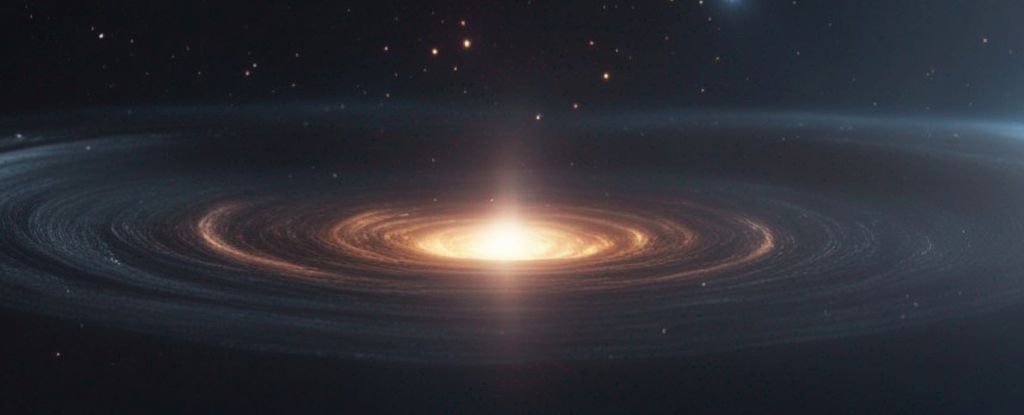
In a groundbreaking study, physicists have proposed a new model suggesting that the Universe could end in a dramatic reversal of the Big Bang, known as the Big Crunch. This theory, based on recent findings about dark energy, posits that the Universe may collapse under its own gravity in approximately 33.3 billion years. Given that we are currently 13.8 billion years post-Big Bang, this leaves us with less than 20 billion years before this potential cosmic finale.
The study, conducted by Hoang Nhan Luu of the Donostia International Physics Center in Spain, Yu-Cheng Qiu of Shanghai Jiao Tong University in China, and Henry Tye of Cornell University in the US, suggests that the Universe will continue its expansion for another 11 billion years before halting and reversing direction. This hypothesis challenges the long-held belief that the Universe’s expansion would continue indefinitely.
Understanding the Cosmological Constant
The cosmological constant, denoted as λ, plays a pivotal role in this new model. Introduced by Albert Einstein in his theory of general relativity, the cosmological constant describes the rate of the Universe’s expansion. A positive λ implies a force that perpetually pushes outward, facilitating expansion. However, Tye and his colleagues suggest that recent data indicates a negative λ, which would act as a gravitational pull, eventually halting and reversing the expansion.
“For the last 20 years, people believed that the cosmological constant is positive, and the universe will expand forever,” Tye explains. “The new data seem to indicate that the cosmological constant is negative, and that the Universe will end in a Big Crunch.”
This shift in understanding is driven by recent observations that hint at evolving dark energy. The new model aligns with a small negative λ, although current data do not entirely exclude the possibility that λ could be zero.
The Role of Axions in Cosmic Dynamics
Central to this model is the concept of axions, ultra-light particles that may constitute dark energy. These particles, first proposed decades ago, are thought to form a smooth, pervasive field across space. In Tye’s model, axions initially propel the Universe outward, but their influence diminishes over time.
Currently, the axion’s influence is still dominant, driving the Universe’s accelerated expansion as gravitational forces weaken. However, in about 11 billion years, the axion’s push will weaken enough for the negative λ to take over, halting expansion at a maximum size approximately 1.7 times its current scale. The Universe will then begin to contract, culminating in a Big Crunch within 8 billion years.
The contraction phase is likened to riding a bike up a hill with a tailwind: as the tailwind eases, the ascent slows, stalls at the crest, and then accelerates downhill.
Implications and Future Research
The Big Crunch scenario presents a stark contrast to the Big Bang, where all matter in the Universe converges back into a singularity of infinite density. While this model offers a compelling narrative, it remains speculative, contingent on further validation of recent data suggesting evolving dark energy.
Despite the uncertainty, Tye emphasizes the importance of exploring such possibilities. “For any life, you want to know how life begins and how life ends – the end points,” he notes. “For our Universe, it’s also interesting to know, does it have a beginning? In the 1960s, we learned that it has a beginning. Then the next question is, ‘Does it have an end?’ For many years, many people thought it would just go on forever. It’s good to know that, if the data holds up, the Universe will have an end.”
The study underscores the need for continued research into the nature of dark energy, which remains one of cosmology’s greatest mysteries. Whether axions or another unknown force are responsible for the Universe’s fate, the quest to understand these cosmic forces continues to captivate scientists and the public alike.







